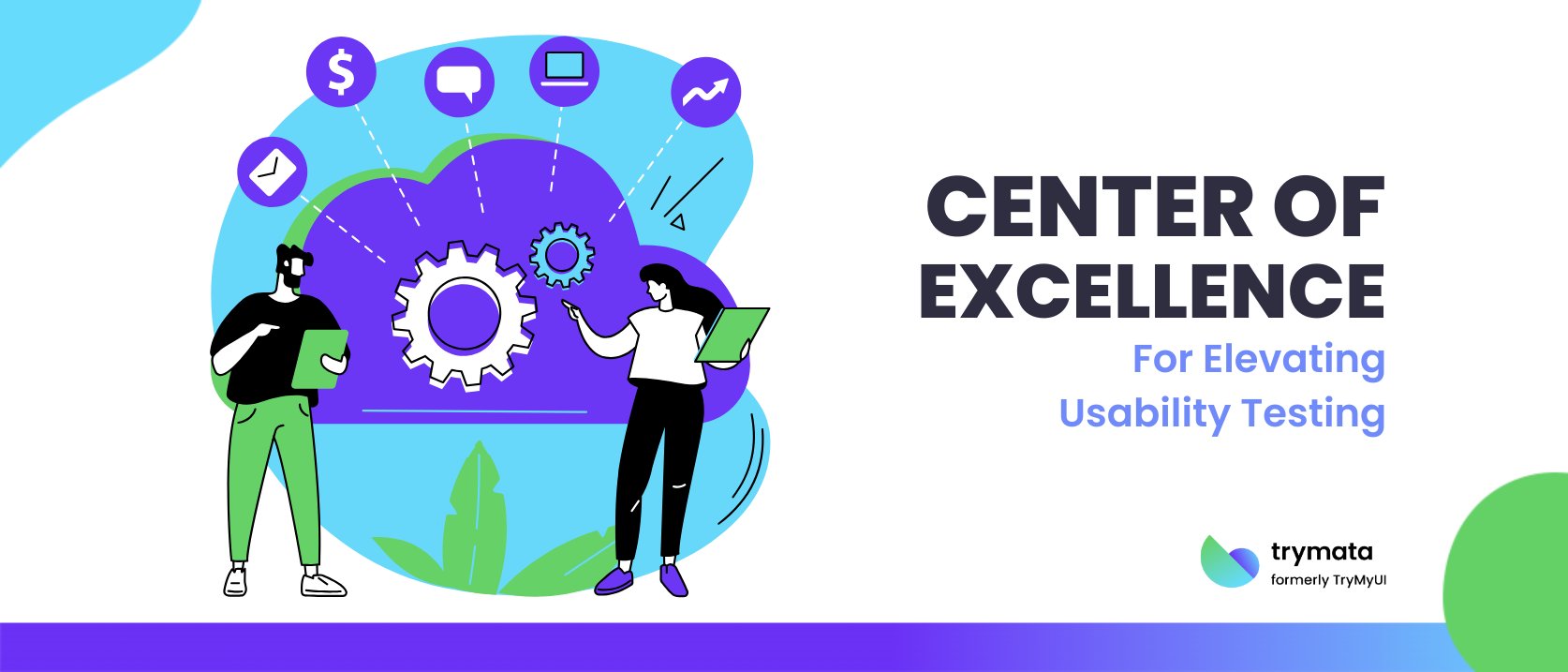Creating a Center of Excellence (CoE) in Usability Testing is about building an internal powerhouse that drives usability and customer satisfaction across an organization. With technology increasingly integrated into every aspect of life, organizations are investing in usability as a core asset to maintain customer loyalty and deliver seamless experiences.
Here’s how a CoE in usability testing can serve as a strategic asset, a resource hub, and a training ground to elevate user-centered design and testing across an organization.
What is the Center of Excellence?
A Center of Excellence (CoE) is a dedicated team, department, or shared facility within an organization that focuses on a particular area of expertise. Its purpose is to standardize best practices, streamline processes, and foster innovation. A CoE brings together resources, tools, and skilled professionals passionate about advancing a specific discipline, making it a hub for knowledge, guidance, and support.
In the context of usability testing, Centers of Excellence in Usability Testing centralize expertise on user experience (UX) and usability methodologies, creating a foundation of knowledge that all teams can access. They ensure consistent and effective usability testing across projects, helping to craft products that are intuitive and enjoyable to use.
Why Create a Center of Excellence?
Establishing a Center of Excellence offers numerous benefits that can significantly impact an organization’s performance and growth. Here are several reasons why organizations choose to create a CoE:
- Enhanced Quality and Consistency: A CoE ensures that projects meet a high-quality level by standardizing processes and practices. This consistency is crucial in maintaining a solid brand reputation and customer satisfaction.
- Increased Efficiency: A CoE helps streamline workflows by eliminating redundant processes and providing clear guidelines. This can lead to faster project turnaround times and reduced operational costs.
- Cultivation of Expertise: Creating a CoE allows organizations to develop in-house experts who can lead initiatives, mentor others, and keep the organization updated on industry trends and best practices.
- Fostering Innovation: A CoE is a hub for research and experimentation, encouraging teams to explore new ideas, tools, and methodologies. This focus on innovation can lead to improved products and services.
- Cross-Functional Collaboration: By breaking down silos between departments, a CoE promotes teamwork and collaboration, leading to more holistic solutions that benefit from diverse perspectives and expertise.
- Data-Driven Decision Making: A CoE emphasizes the importance of data collection and analysis, enabling organizations to make informed decisions based on user feedback and performance metrics.
- Risk Mitigation: Standardized practices help identify potential risks early in the project lifecycle, allowing teams to address issues proactively and reduce the likelihood of costly mistakes.
- Strategic Alignment: A CoE aligns initiatives with the organization’s strategic goals, ensuring that projects contribute to broader business objectives and deliver maximum value.
Building a Center of Excellence in Usability Testing
Creating an effective CoE in usability testing involves several key steps:
1. Define the Vision and Goals
Start by defining the CoE’s vision and goals. What does success look like? How will the CoE align with the organization’s broader objectives? Engaging key stakeholders in this process ensures buy-in and support.
2. Establish a Core Team
Identify and assemble a team of usability experts who will form the foundation of the CoE. This team should comprise individuals with diverse skill sets, including user experience designers, researchers, data analysts, and project managers.
3. Develop Standardized Processes
Create standardized processes for usability testing that encompass all stages of product development. This includes defining testing methods, establishing participant recruitment strategies, and outlining data analysis protocols.
4. Invest in Training and Resources
Provide ongoing training and resources to enhance team members’ skills. This can include workshops on usability testing methods, industry research access, and usability testing tool subscriptions.
5. Foster a Culture of Collaboration
Encourage collaboration and communication across departments. Regular meetings, knowledge-sharing sessions, and collaborative projects help bridge gaps and foster a unified approach to usability.
6. Measure Success
Establish metrics to evaluate the effectiveness of the CoE. This can include measuring the impact of usability testing on user satisfaction, product performance, and overall project success. Regularly review and refine processes based on feedback and results.
Challenges in Implementing a Usability Testing Center of Excellence
While the benefits are significant, implementing a Usability Testing CoE is challenging.
- Resistance to Change: Teams may only accept new usability standards if they are accustomed to their workflows. Overcoming this requires effective change management and communication from leadership.
- Resource Constraints: Establishing a CoE requires resources—both in terms of skilled personnel and financial investment. Smaller organizations may struggle to allocate the necessary budget.
- Keeping Up with Technology: As technology evolves, so do usability standards. A CoE must continuously adapt to new tools, platforms, and methods, requiring an ongoing commitment to innovation and learning.
Conclusion
A Center of Excellence in Usability Testing is a powerful asset for organizations aiming to enhance their user experience. Organizations can create products that resonate with users by establishing a structured approach to usability testing, fostering collaboration, and promoting a culture of continuous improvement.
The journey to building a CoE may require effort and investment, but the long-term benefits of improved user satisfaction, increased loyalty, and streamlined processes make it worthwhile. In the digital age, where user experience is paramount, a CoE in usability testing can be the difference between a product’s success and failure. Embrace the power of usability testing, and let your organization shine as a leader in user-centered design.




